How to get rid of mushrooms in a lawn: tips for controlling fungi
Follow our expert tips on how to get rid of mushrooms in a lawn and prevent them from growing in your grass

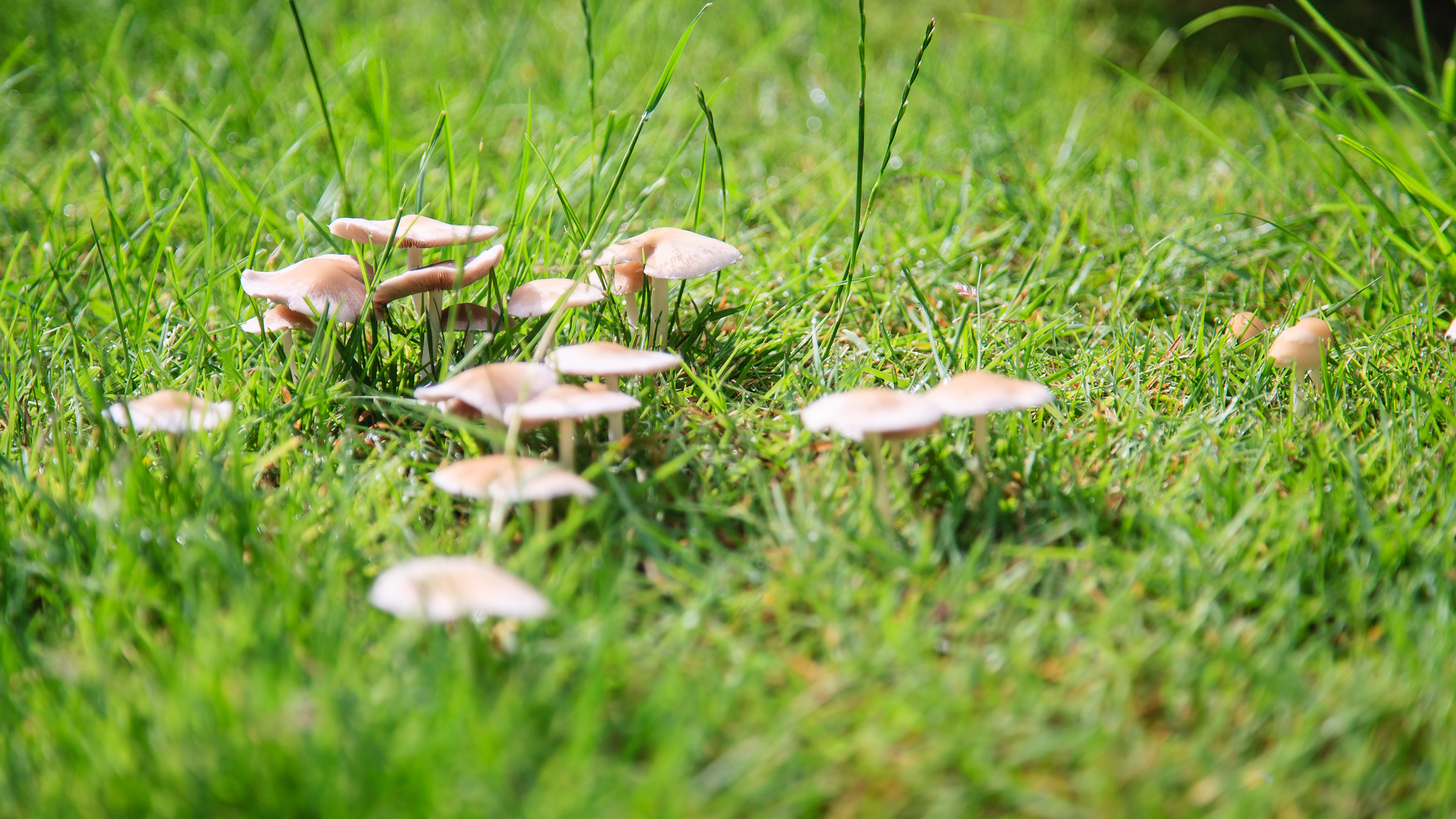
Wondering how to get rid of mushrooms in a lawn and prevent them from growing back? The good news is there are several methods for removing them from your grass to ensure you get to enjoy a pristine patch of turf in your plot.
There are thousands of mushroom species, and it would be unusual not to find at least one of them growing in a garden lawn at some point. Some people love them, especially if they have children or grandchildren who associate toadstools and rings of mushrooms with fairies. Other gardeners dislike the sight of fungi and want lawn care tips to get rid of them, and many simply want to know whether or not they are safe.
Whichever mushroom camp you fit into, it is interesting to learn why the fungi are growing there in the first place. ‘Mushrooms are a good sign in a lawn,’ says David Hedges-Gower, Chairman of The Lawn Association. ‘They show that soils are alive with fungus and bacteria.’ In other words, the mushrooms are telling you that your grass is healthy.
‘But of course, some types give off a fruiting body, which can be irritating on your lawn,’ acknowledges David. ‘Many assume that using a fungicide would be the answer, but far from it.’
3 easy methods for how to get rid of mushrooms in a lawn
If you want to find out how to get rid of mushrooms in a lawn, follow these simple chemical-free steps and improve the overall appearance of your lawn ideas. Not only will these methods get rid of the fungi fruit, they will boost the health of your grass, producing a more lush, dense greensward.
1. Remove mushrooms on the surface
Although the main body of fungus is a network under the grass, the visible part or ‘fruit’ – the mushroom cap and stalk – can be removed.
‘Mushrooms are very delicate and easily crushed or dislodged from turf,’ says Peter Landschoot, Professor of Turfgrass Science at Penn State College of Agricultural Sciences. ‘Large mushrooms can be destroyed by mowing. Smaller mushrooms can be dislodged by raking or by simply kicking them out of the turf.’
Alternatively, pluck mushrooms out by hand. Ensure you wear gardening gloves, as some fungi are poisonous.
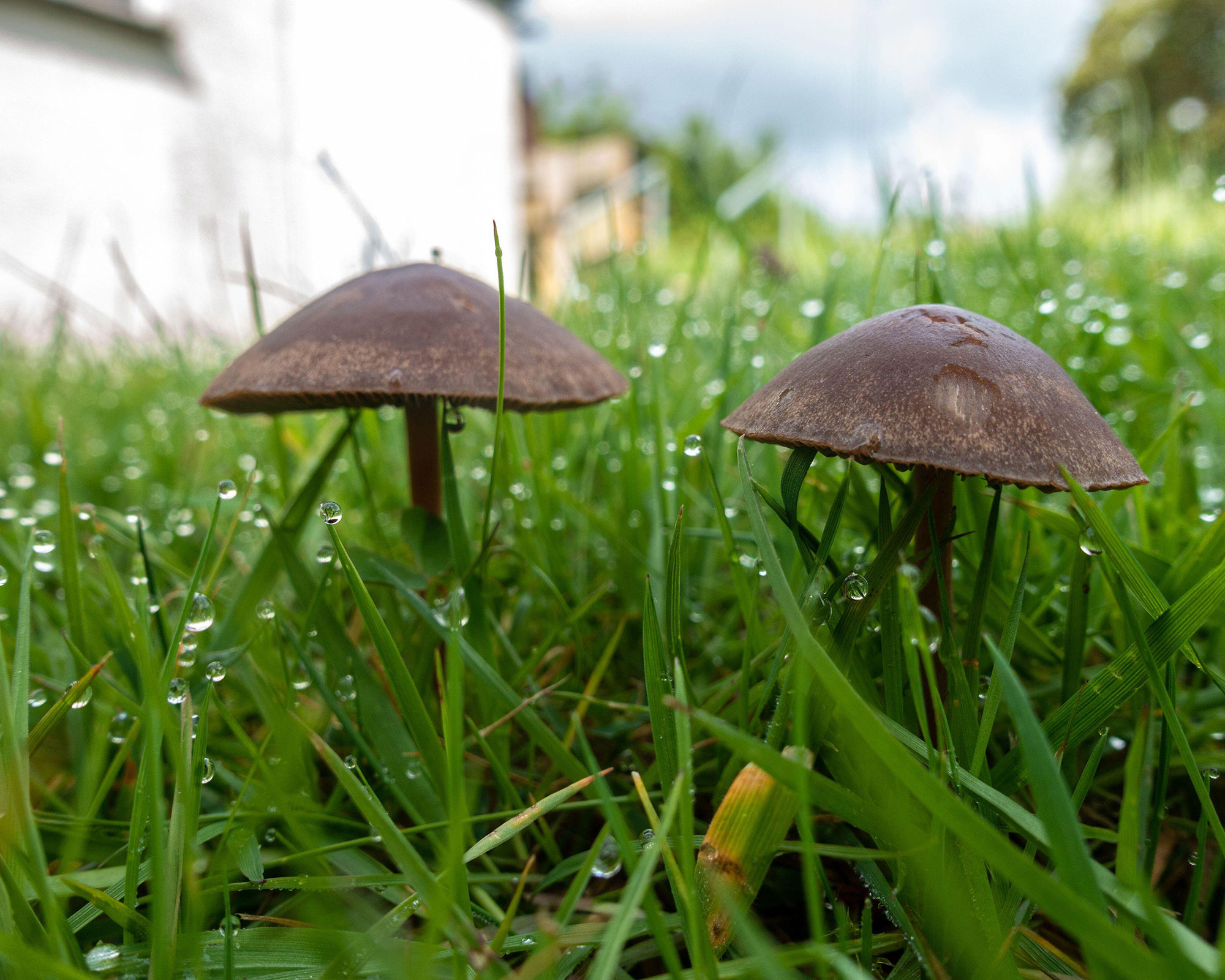
2. Add air to the soil and lawn
One of the key things to remember when learning how to get rid of lawn weeds of any kind is to ensure your grass is healthy.
For that reason, one of the simplest way to get rid of fungi’s visible fruit (the mushrooms) is to give your lawn some regular TLC by aerating it, says David Hedges-Gower, Chairman of The Lawn Association. ‘Adding large quantities of oxygen into the soil will not only help the lawn roots, drainage, moss control, and more, it will also increase the number of fungi and bacteria that will fight against the fruiting fungi. Keep chemicals away as all they do is damage the soil!’
If you're unsure how to aerate a lawn, in basic terms it involves making holes in the lawn at intervals to reduce compaction and in turn boost the grass health. If using a regular long-handled garden fork, do it annually in early fall; if using a hollow tine aerator, do it every 2-4 years. You can also hire machines to aerate large lawns.
This method can also be an effective solution for how to get rid of lawn moss.
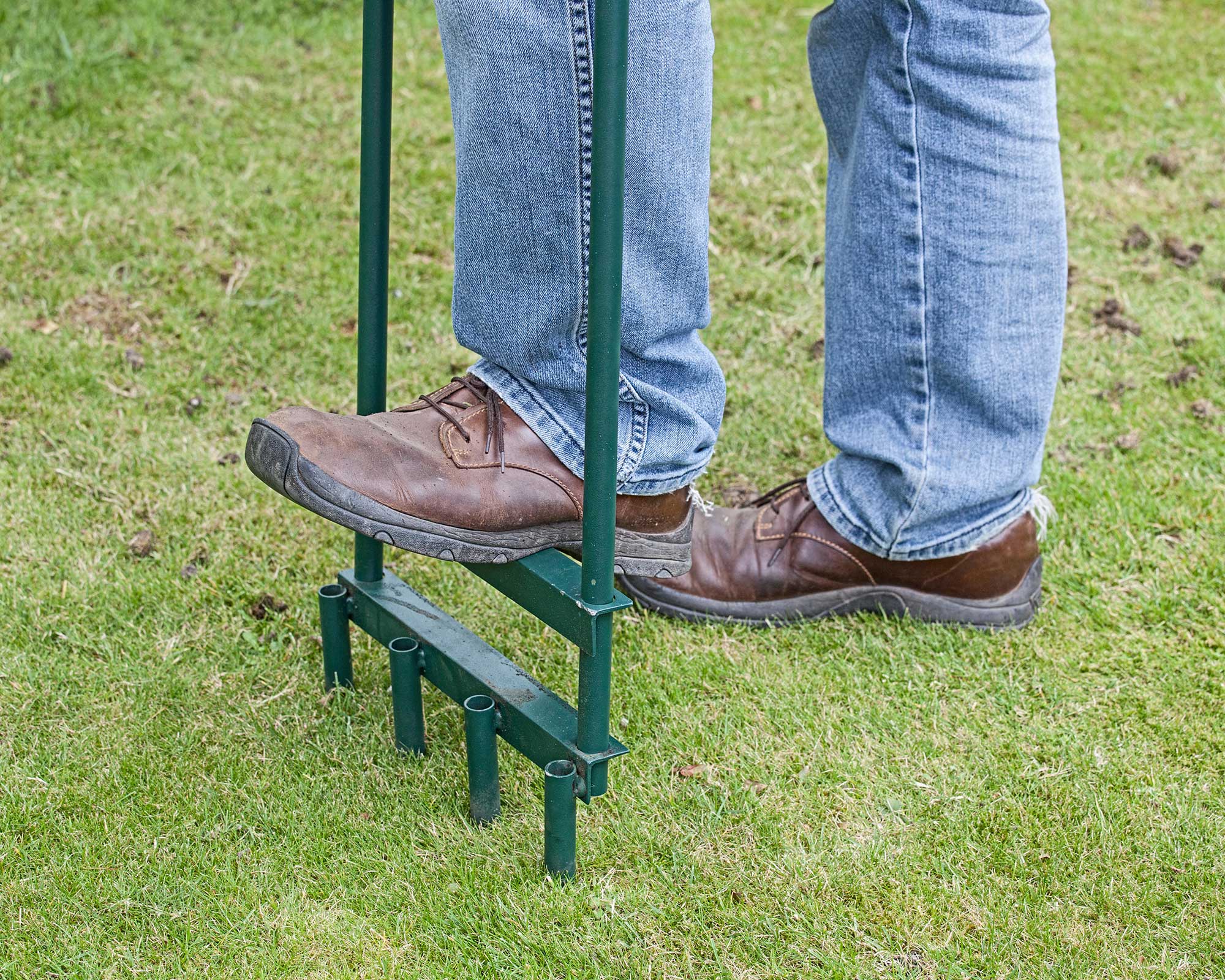
3. Water the lawn to reduce the number of mushrooms
Fairy rings are circular areas of denser, greener grass or dead grass caused by Basidiomycetes fungi. In late summer and fall, they may produce circles of mushrooms. If you dislike them, one of the best ways to treat them is watering.
‘These rings can be very unsightly and left unmanaged can result in dead grass,’ says Sandy Reid, Director of Greenkeeping at the St Andrews golf courses in Scotland, which will host the 150th Open in 2022. ‘There is no effective chemical treatment available, so the most successful practice we employ is to try to maintain soil moisture levels at 18-22%, as extreme fluctuations in soil moisture usually triggers fairy ring activity. We also target active fairy rings with hand watering to help reduce hydrophobicity in the soil, as it is this that leads to grass death.’
Various kinds of mushrooms can form fairy rings, including some that are edible and some that are poisonous.
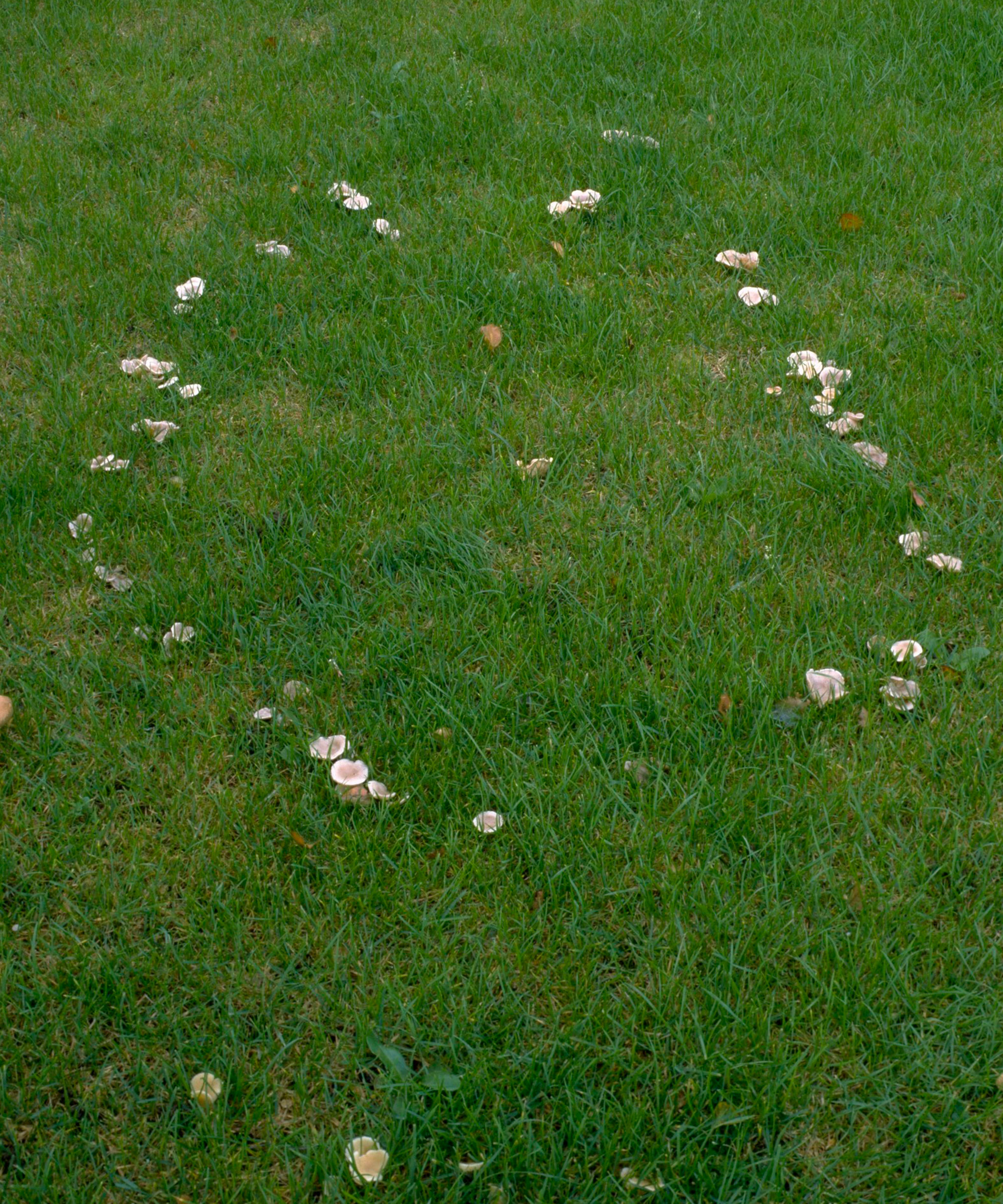
What are lawn mushrooms?
Lawn mushrooms are fruit of fungus that lives in the soil beneath the lawn. ‘Mushrooms are temporary, reproductive (spore-producing) structures,’ explains Peter Landschoot. ‘They are produced from thread-like fungal strands residing in soil and thatch in lawns. Most of the fungus is out of sight, below the turf surface.’
The underground networks of fungi are fascinating. In her recent book called Finding the Mother Tree (available on Amazon), Professor Suzanne Simard describes how fungi link trees together, enabling them to communicate and thrive. Once you learn that fungi are not only a part of soil health, but are responsible for producing beautiful forests, you may never look at your lawn mushrooms with disdain again!

Are mushrooms in a lawn poisonous?
For anyone with pets or children, the sight of fungi growing in a lawn can be worrying. ‘Many types of mushrooms may grow in your lawn, especially where trees have been, in shaded moist areas,’ says David Hedges-Gower. ‘There are too many to name, but always be aware that many are dangerous.’
The safest thing to do is remove the caps and stalks, either with your lawn mower, by raking, or by hand when wearing gloves.
Another way to put your mind at rest, if dogs and children use the lawn, is to identify the mushroom and find out whether or not it is toxic. Contact a mycologist or mushroom expert (such as Michael Kuo). There are also apps and websites (including Champignouf) that identify mushrooms via photographs.
To keep your pets safe when they're outside enjoying the garden, make sure you're up to speed with the most poisonous plants for dogs and plants that are poisonous to cats too.
Can you leave mushrooms growing in a lawn?
Yes, but be aware – especially if you have dogs or children – that some fungi are poisonous. As described above, the safest thing is to remove or identify the mushroom. If you learn that it is a harmless species, it can be left in the lawn as an additional feature of your lawn decoration ideas.
Many children enjoy the sight of mushrooms, believing them to signify the presence of fairies in the garden. There are also lots environmental advantages to leaving fungi – for instance, they can be beneficial to the health of soil and trees, help to boost a wildlife garden, plus squirrels like to eat mushrooms, which may help to keep them off your bird feeders.
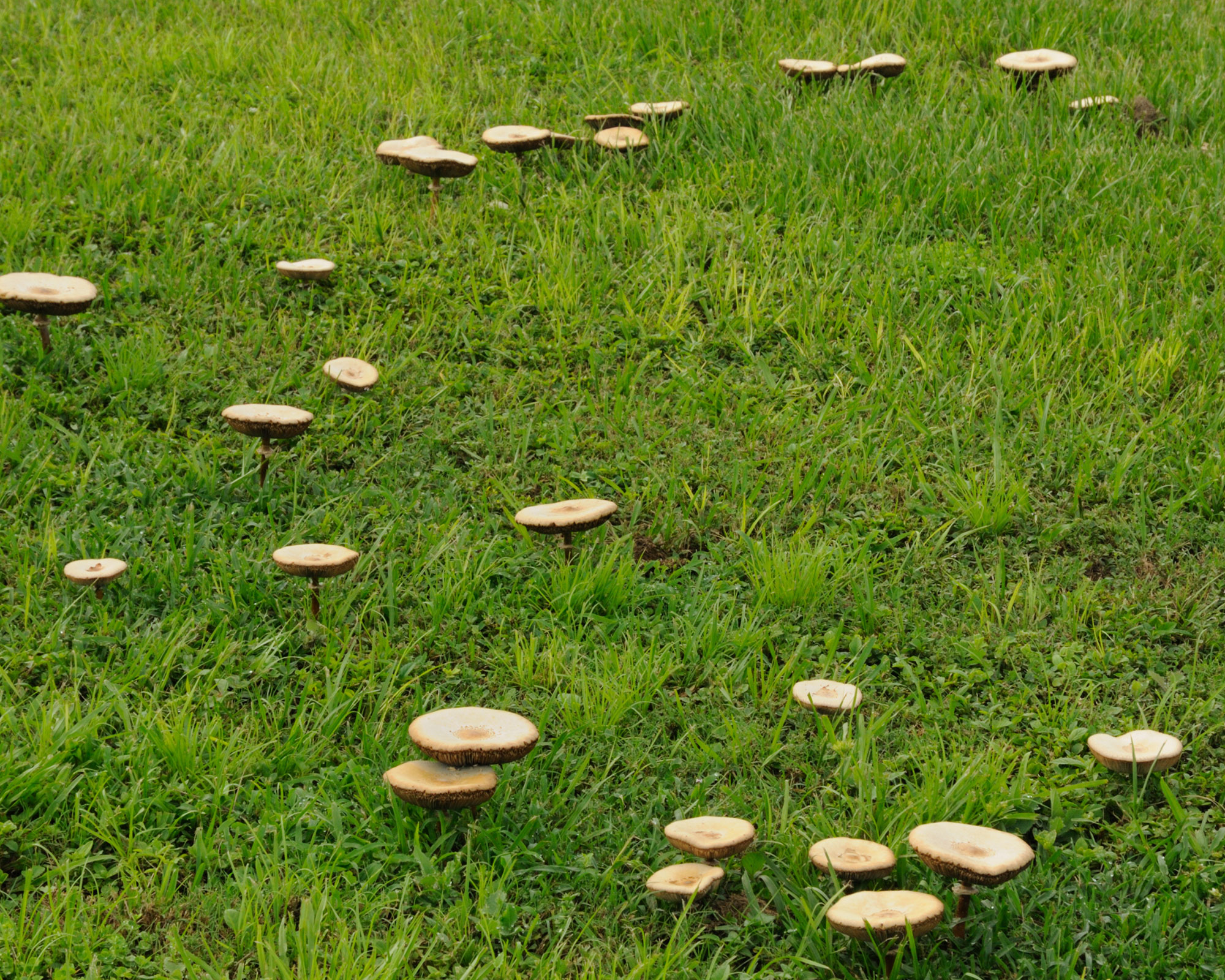
Should I use fungicide to remove mushrooms?
No – chemicals are ineffective. ‘To my knowledge, there is no practical chemical method of removing mushrooms from lawns,’ says Peter Landschoot.
The non-toxic methods, described above, are the best approach. But these will only remove the visible mushrooms (caps and stalks), not the network structure underneath the grass, which constitutes the main body of the fungus.
I have mushrooms in my lawn that are in a circle. What are these?
'These half circles of mushrooms/toadstools are known as fairy rings or pixie rings,' says Amateur Gardening expert John Negus. 'They can be complete circles or arcs and are caused by fungus that feeds on the roots of grass causing browning. There may be lush green growth adjacent to the brown arcs or circles. The fungi is hidden below ground for most of the year, with the toadstools or mushrooms appearing in late summer and into fall. Unfortunately, it is very difficult to eradicate fairy rings and there are no chemical methods available.
'To control Fairy ring fungus (Marasmius oreades) efficiently, dig out the affected dead grass to 3ft (1m) deep and 1ft 6in (1⁄2m) on either side of the ring. Then replace "spoil" with uncontaminated soil and then reseed or re-turf. This is a big job, with no guarantee of eradication, as the roots may have spread beyond the dead circle.' If this is the route you choose to go down, there are lots of useful tips on how to plant grass seed and how to lay turf in our dedicated guides.
'An easier and almost as effective alternative is to aerate the dead patch with a garden fork to a depth of 10in (25cm), then water it with dilute detergent to remove waterproof resins from the soil particles,' continues John. 'Rain will then penetrate. Finally, scarify the area and overseed it with a "lawn thickener" blend. Hopefully, new growth will cover the bald ring and the disease won’t recur.
'There are some other options you can try too if you want to reduce the impact of the fairy rings. First, remove toadstools as soon as they appear. Second, reduce the amount of organic matter available to the fungus by collecting grass mowings and by raking or scarifying the lawn in early fall to reduce the build up of thatch (dead leaves and moss). Third, spiking helps to break through the water-repellent fungal mycelium in the soil, which helps to prevent the grass from drying out. Finally, keep lawns watered in dry weather and well fed to even out the color of the grass.'

How can you get rid of saprophytic fungi growing in lawns and flower beds?
Saprophytic fungi absorb soluble organic nutrients from dead plant material, so if you want to remove them the aim should be to get rid of the dead organic matter on which it is feeding.
'In the lawn this might be blades of cut grass or any top-dressing of organic matter (shredded wood chip, for example) and in flower beds it is most likely to be a mulch of bark or wood chip, or potting compost containing wood,' says Amateur Gardening's expert John Negus. 'It might also appear along the line of tree roots growing just below the surface, where the tree has been cut down and the roots are starting to decompose. If it is likely to be tree roots then you could consider digging the roots up, or tolerate the fungus for the next couple of years while the roots rot away.
'This type of fungi will thrive in damp and humid conditions, so improving garden drainage in the lawn and creating drier conditions will help to discourage its appearance. This could simply be a matter of aerating the surface and brushing in lawn sand or topsoil – the grass will appreciate the extra air around the roots.'

For the past 18 years, Beth has worked for and contributed to a number of leading magazines in the UK, including Real Homes, Ideal Home, Period Living, Grand Designs and Good Homes amongst others. Now the editor of Gardeningetc.com, Beth's attention is firmly outdoors. Her own garden is a really important part of her family's home, and she loves spending time tending to the veg patch or entertaining friends and family at a summer BBQ or alfresco pizza night.
